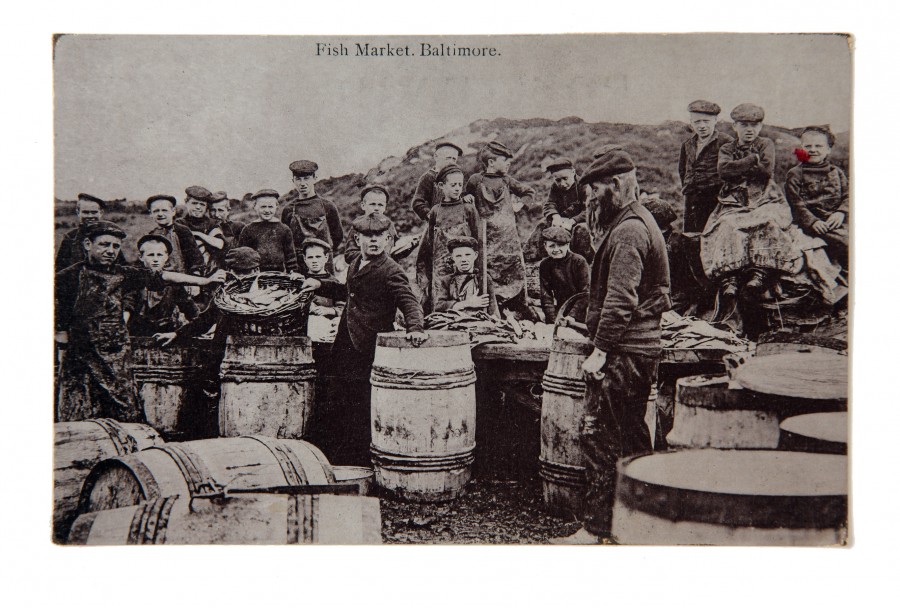Kieran’s Our City, Our Town Article,
Cork Independent, 15 December 2016
Remembering 1916: Railways Connecting the Region
There are some great historical narratives within Cork’s news for 1916. A number address Cork’s links to the region through its railway line infrastructure. In newspapers and archives one can read about the benefits of such lines as the Cork Bandon and South Coast Railway, the Cork Muskerry Tram and the Cork Blackrock and Passage Railway Line connecting people, animals, fisheries and place from the coast and hinterland to the city and vice-verse – igniting the region and city into one.
The Cork South Coast and Western Railway Company across one year between 1915 and 1916, as reported at their company AGM in mid February 1916, stressed the importance of their transport link. They highlighted that the total number of passengers the company carried was 503,531. This was an increase of 31,000 and in money £2,037 over the previous year. In parcels and miscellaneous traffic there was an increase of 18, 885 tons, representing £1,588 in money. Of this increase 4,134 tons was in coal and coke owing to a greater quality having been sent over the railway from Cork instead of being shipped direct to the western ports by coasting vessels.
Lime, brick, stone and slate all showed decreases. Building operations had been to a great extent suspended owing to the war. The quantity of stone required for the streets of Cork was also reduced. In barytes traffic there was an increase of 2,639 tons. Enhanced prices and the total cessation of the usual continental supply to the markets led to an increased output from the mines at Clonakilty and Bantry. Imported grain showed an increase of nearly 19,000 tons. The traffic of grain had almost doubled in the previous 12 months, and like coal, was capable of great development if additional sidings were constructed on Anderson’s Quay and on a new timber wharf at Victoria Quay.
The railway company carried 2,650 more cattle whilst in pigs there was an increase of 4,676. The fish traffic from Skibbereen, Kinsale and Bantry was at normal levels, while from Baltimore there was transported 1,645 tons of fresh mackerel and herring, showing an increase of 850 tons, over the previous year’s consignment from that port, and making a record year. The completion of the new pier there being constructed by the Congested Districts Board and by Cork County Council, made Baltimore a very important fishing station. From 1879, Baltimore had developed as a centre of an expanding mackerel fleet. Eleven steamers brought the spring mackerel to England on an almost daily basis. In 1887, the Baltimore Fishing School for the training of 150 boys in a fishing occupation was founded. In 1880, a new pier was built and in 1893, a new spur rail track from Skibbereen to Baltimore was opened to transport the fish to other markets in the city and county.
At the annual company meeting of Cork Blackrock and Passage Railway in late February 1916 serious difficulties were presented – namely the closing of Crosshaven by the military authorities on the outbreak of the war, the increased cost of coal, labour and stores, and the erection of a new pier at Queenstown. The gross revenue showed an increase of £1,419, but had they been permitted by the military authorities to carry on the usual summer and excursion traffic to Crosshaven, they would have had large additional receipts.
Crosshaven Station closed shortly after the commencement of the war. This effected trade within the village. In addition small boats with oars were used by the men of Fountainstown, Myrtleville and Fennel’s Bay. The fishing grounds were located around the harbour mouth. Those without boats waited for the mackerel to come inshore and caught them by the hundred with large pocket nets. A barrel of salted mackerel could be seen in every fisherman’s cottage in preparation for winter each year. Without the train fast transport to Cork’s markets limited trade. Tourism was also affected. Crosshaven in 1916 was a growing tourism town; it had five hotels, twelve shopkeepers, and four vintners.
The military authorities prohibited civilians from approaching the coast line between Ringabella Creek and Crosshaven village, either by day or night. All the summer residents were ordered away, but as a matter of equity they were refunded a portion of the cost of their season tickets. No persons were allowed to enter the district without military permits. All excursion traffic by train and boat was prohibited, with the result that the Crosshaven traffic was practically decimated. This state of affairs continued up to 27 June 1915, when a slight modification of the regulations was made, exempting visitors from the necessity of permits, but no excursion traffic was permitted, and as a consequence hardly anyone visited Crosshaven.
From the first day of the war the railway company had done everything in their power to assist the naval and military authorities. There was a great demand by both services, for the transport of stores to various camps within the Harbour and to Haulbowline. Finding it impossible to satisfy their requirements with the existing goods steamers, the directors purchased an additional vessel, the “Taffy” at great expense, and though able to carry all the naval and military stores offering, they were doing so without profit.
Cork 1916, A Year Examined (2016) by Kieran McCarthy & Suzanne Kirwan is now available in Cork bookshops.
Cork City History Tour (2016) by Kieran McCarthy is also available in Cork bookshops.
Captions:
874a. Baltimore fish market, c.1916 (source: West Cork Through Time by Kieran McCarthy & Dan Breen)
874b. Crosshaven, Cork Harbour, c.1916 (source: Cork Harbour Through Time by Kieran McCarthy & Dan Breen)

